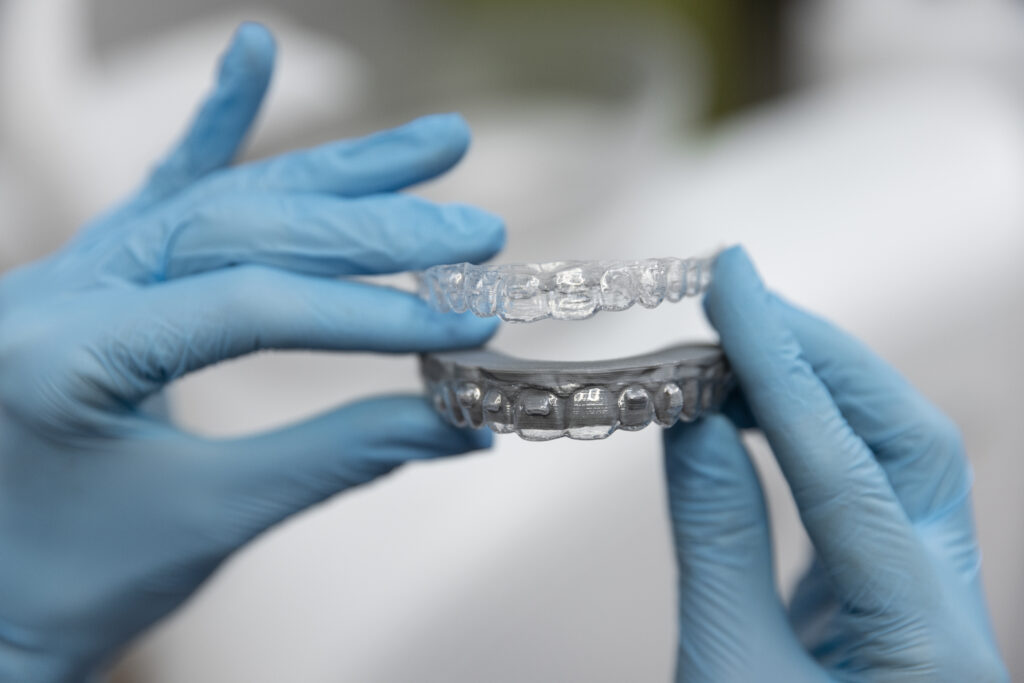Invisalign in Ventura: Real Stories & What Changes You’ll Actually Notice
Key Takeaways Crooked teeth don’t just affect your smile; they affect how you feel about yourself. Braces used to be the only answer, but now Invisalign treatment in Ventura is giving patients a clear, comfortable way to straighten teeth without the metal brackets. Many of our patients at Clove Dental Ventura share that the biggest change isn’t only in their smile, but in their confidence. The process is simple, but the results can reshape daily life in ways you might not expect. What Makes Invisalign Different? Invisalign isn’t just “braces without wires.” The clear aligners are designed to be nearly invisible. You pop them in, wear them most of the day, and switch to a new set every couple of weeks. Unlike traditional braces, there are no food restrictions and no painful wire adjustments. Patients tell us they appreciate being able to remove the trays for eating, brushing, and special occasions. That freedom makes Invisalign treatment much easier to live with, especially for adults who don’t want braces showing up in work meetings or family photos. The Real Stories Patients Share One Ventura College student came to us worried about speaking in class presentations. After three months with Invisalign, she said classmates noticed her confidence before they noticed her teeth. Another patient, a local business owner, admitted he used to avoid smiling in customer photos. After treatment, he said the best compliment he got was from a client who told him he “looked happier.” Stories like these are common. Straightening teeth does change your bite and alignment, but it also changes the way you carry yourself. What Changes You’ll Notice First Most patients say they feel the difference before they see it. Here’s what typically stands out: It’s not an overnight fix, but the steady progress can be encouraging. Lifestyle Fit for Ventura Patients Life here is active. People surf, cycle, and spend hours outdoors. Invisalign fits right into that lifestyle. You don’t have to worry about braces cutting your lip if you fall off your board or deal with wax for sharp wires. Plus, many Ventura patients care about appearances at work or in social events. Clear aligners mean you can keep improving your smile without it being obvious to everyone around you. Comparing Invisalign to Braces Both Invisalign and braces can fix alignment, but the experience is very different. That said, braces may still be better for very complex cases. That’s why it’s important to get a full exam before choosing. What About the Cost? Many patients assume Invisalign treatment will cost much more than braces. The truth is, the difference isn’t always that big. The exact cost depends on how complex your treatment is. Some insurance plans also help cover orthodontic care, including Invisalign. We’ve found that when people compare the convenience, comfort, and appearance, Invisalign often feels worth it, even if the cost is slightly higher. How to Take Care of Invisalign Trays The aligners are easy to manage, but they do require care. Simple steps like these keep your treatment on track and your trays clear. Final Thoughts Invisalign treatment in Ventura isn’t just about straighter teeth. It’s about living comfortably while you get there. With clear aligners, you can enjoy your lifestyle, whether that’s surfing at the beach, enjoying a meal out, or just smiling more in daily life, without the hassle of traditional braces. At Clove Dental Ventura, we’ve helped students, professionals, and retirees discover that Invisalign can change more than just their smile. The process is straightforward, the aligners are comfortable, and the results speak for themselves. If you’ve been thinking about straightening your teeth but dread the idea of braces, Invisalign may be the step that makes it possible. Sometimes the biggest change isn’t just in your smile, it’s in how you feel showing it.


